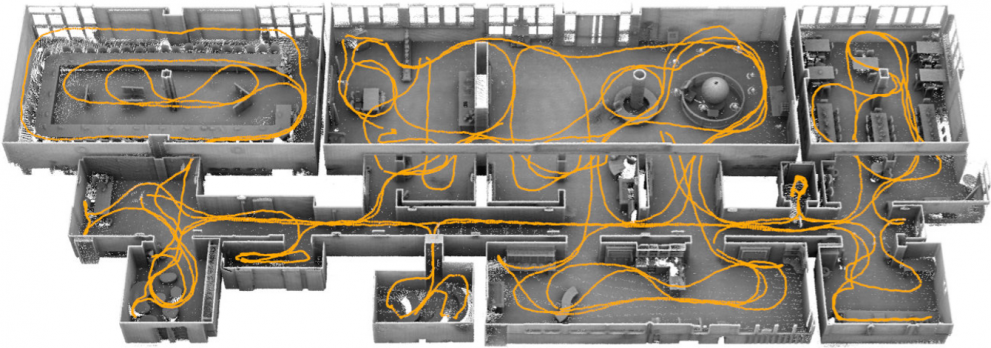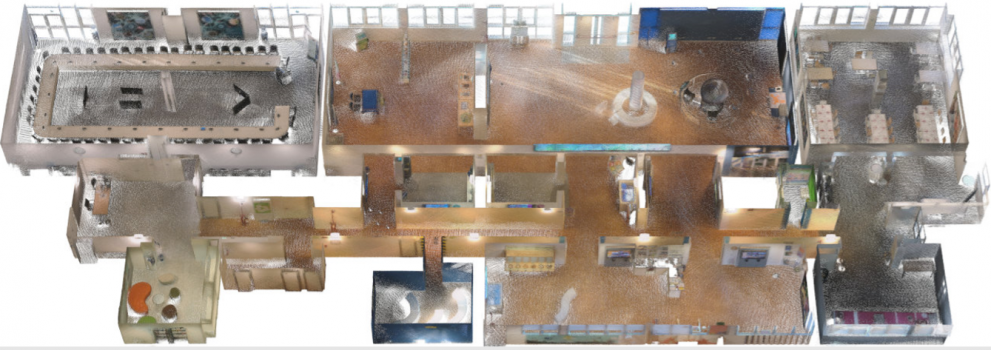
A recent JRC exploratory research project has proven that Artificial Intelligence can assist nuclear inspectors during on site verifications. Thus showing how digital technologies can strengthen nuclear security.
During verifications in nuclear facilities, inspectors must identify the existing nuclear material and its location. Being able to rapidly know their exact position inside complex facilities or underground repositories would be a significant improvement. But the absence of indoor satellite signals hinders geolocalisation inside buildings.
With the exploratory research project Robust Indoor Localisation in Complex Scenarios we investigated the use of Artificial Intelligence and explored new solutions to the indoor localisation problem.
Where is the inspector?
To localise precisely someone inside a building, we addressed the problem in two steps: first, we created the indoor model of the building (mapping); second, we identified where the person is situated within the model (localisation).
For the first step, we developed a Mobile Laser Scanning Platform. It is a backpack equipped with portable laser scanners and multiple cameras, that acquires 3D measurements and images and combines them to recreate a 3D model of the indoor building (fig. 1a and 1b). The system can be employed by IAEA and Euratom inspectors to verify the design of nuclear facilities.


For the second step, our exploratory project has investigated the Visual Place Recognition problem with Convolution Neural Networks (CNN). CNNs can learn from training data to recognise, for example, that two images are an observation of the same place, despite different conditions of light or the presence of people. In our case, the training data is generated through the 3D information and images acquired in the first step. They allow the CNN to learn what “possible photos” would look like if they were taken from precise positions inside the building. By comparing an actual photo taken by an inspector with this database of “possible photos”, the CNN can precisely identify where the actual photo has been taken and localise the inspector. And this happens in real time.
More to come…
With the RISE project we proved that Artificial Intelligence can offer a solution to the indoor localisation problem and help the real time localisation of inspectors in nuclear facilities, thus improving their efficiency. The same system can answer to other situation awareness needs, such as for first responders or facility managers.
But there is more to this, as the results obtained so far suggest that it will be possible to develop Augmented Reality information systems to support nuclear inspectors, bringing together indoor navigation, site information and data process related data (fig 2).

Artificial Intelligence and nuclear experts keep investigating together to ensure nuclear materials are well safeguarded.
Further readings and datasets:
The results of the RISE project have been presented at:
- International Conference on Robotics and Automation ICRA2020
- 25th International Conference on Pattern Recognition ICPR2020
All training datasets acquired during the RISE project are available on the JRC Data Catalogue: RISEDB
Related Content
Details
- Publication date
- 18 February 2021
